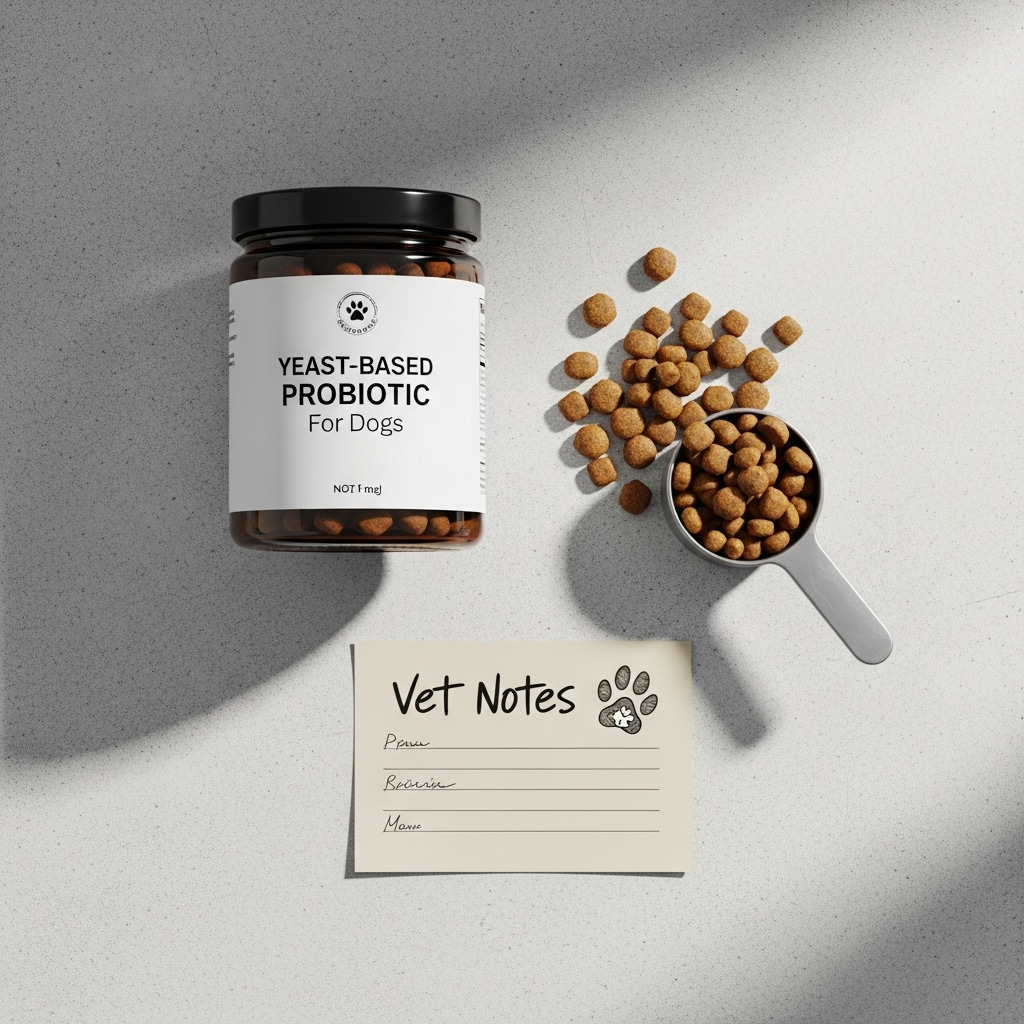Yeast-Based Probiotics for Cats: Pros and Cons

Yeast-based probiotics for cats have become a popular option for owners looking to support their feline’s digestive and immune health. Unlike common bacterial probiotics, yeast strains such as Saccharomyces boulardii act differently in the gut, and they may be useful in specific situations — for example during or after antibiotics or with certain types of diarrhea. This guide explains how they work, potential benefits and risks, how to choose and give them safely, and when to consult your veterinarian.
What are yeast-based probiotics?
Yeast-based probiotics are live yeast organisms formulated to provide a health benefit to the host. The most researched yeast probiotic for pets and people is Saccharomyces boulardii. When given in appropriate forms, these yeast cells can help modulate gut function, compete with harmful microbes, and support intestinal barrier health. They are different from bacterial probiotics (like Lactobacillus or Bifidobacterium) in structure and some mechanisms of action.
How they work
- Support gut barrier function and reduce inflammation in the intestinal lining.
- Produce substances that can inhibit or displace harmful microbes.
- Remain viable in environments where some bacteria cannot, for example during many antibiotic therapies.
- Often act transiently — they do not permanently colonize the cat’s gut but can have short-term beneficial effects.
Potential benefits for cats
Studies in animals and clinical use suggest several potential benefits of yeast-based probiotics for cats:
- May help reduce the duration and severity of acute diarrhea, including diarrhea associated with antibiotics.
- Can support recovery of a healthy gut microenvironment after disruption (such as stress, diet change, or illness).
- May support immune function in the gut and help reduce some types of intestinal inflammation.
- Often stable at room temperature and during stomach acid exposure better than some bacterial strains, making them practical for certain products and situations.
Risks, side effects, and safety considerations
Yeast-based probiotics are generally well tolerated by healthy cats, but there are important cautions:
- Mild gastrointestinal upset (temporary gas or soft stool) can occur as the gut adjusts.
- Use with antifungal drugs may be ineffective, because antifungals can kill the yeast probiotic.
- Pets with severely weakened immune systems, central lines, or certain medical conditions may be at higher risk of invasive yeast infection (rare). Discuss use with your veterinarian first in these cases.
- Quality control matters: contaminated or mislabeled products can pose risks. Choose products manufactured for animal use or recommended by your veterinarian.
When yeast probiotics may be inappropriate
Avoid giving yeast-based probiotics without veterinary guidance to cats that are critically ill, are receiving systemic antifungal therapy, or have confirmed immune compromise. For routine health support in otherwise healthy cats, they are often safe when used according to label instructions or a vet’s recommendations.
How to choose and administer a product
If you’re considering yeast-based probiotics for cats, keep these points in mind:
- Look for products containing a well-studied strain such as Saccharomyces boulardii and labeled for feline or veterinary use.
- Check expiration dates and storage requirements (some are shelf-stable; others need refrigeration).
- Follow the product’s dosing instructions or use the dose your veterinarian prescribes. Do not give human products to cats without checking with a vet.
- If your cat is already taking antibiotics, tell your vet — yeast probiotics are often compatible with antibiotic treatment, but timing and product choice matter.
- Monitor your cat’s stool, appetite, and behavior after starting the probiotic and report any concerning changes to your veterinarian.
Evidence and veterinary perspective
Research on Saccharomyces boulardii shows benefit in reducing duration of certain diarrheas in humans and animals, and there is growing clinical experience in veterinary practice. Evidence in cats is not as extensive as in humans, but many practitioners use yeast-based probiotics as an adjunctive therapy for acute diarrhea, stress-related digestive upsets, and during antibiotic courses. They should not replace diagnostics or targeted treatment when a cat has serious or persistent GI signs.
Pros and Cons
| Pros | Cons |
|---|---|
| Resistant to many antibiotics — can be used during antibiotic therapy | May be ineffective if given with antifungal medications |
| Shown to help shorten some types of diarrhea and support gut health | Rare risk of invasive infection in severely immunocompromised animals |
| Often shelf-stable and easy to dose | Quality and labeling vary between products; vet guidance needed |
How to give yeast-based probiotics to a cat
- Confirm the product is suitable for cats and check the dose with the manufacturer label or your veterinarian.
- Mix powder form into a small amount of palatable food or use a capsule placed in a treat if your cat accepts it.
- Give at the dose and frequency recommended — do not exceed the labeled amount without vet approval.
- Observe your cat for improvement (or any adverse effects) over several days and report concerns to the clinic.
When to see a veterinarian
Contact your veterinarian if your cat has severe, bloody, or prolonged diarrhea, if there are signs of systemic illness (fever, lethargy, decreased appetite, vomiting), or if your cat is very young, elderly, or immunocompromised. Probiotics can be supportive but are not a substitute for diagnosis and treatment of underlying disease.
Frequently Asked Questions
1. Can I give my cat human Saccharomyces boulardii products?
Many human S. boulardii products contain the same active strain used in veterinary products, but formulations and excipients may differ. Always check with your veterinarian before using human products for dosing and safety.
2. Will yeast probiotics permanently change my cat’s gut flora?
No. Yeast probiotics typically act transiently and do not permanently colonize the gut. Benefits usually require continued or repeated dosing during times of need.
3. Can I give a yeast probiotic at the same time as antibiotics?
Yes — one advantage of yeast probiotics is that many antibiotics do not affect them. This makes them a common choice during antibiotic therapy; nevertheless, confirm timing and product choice with your veterinarian.
4. How quickly should I expect to see results?
Some owners notice softer stools improve within 24–72 hours, but response varies. If there’s no improvement or the condition worsens, contact your veterinarian promptly.
5. Are there alternatives to yeast-based probiotics?
Yes — bacterial probiotics, prebiotics, synbiotics, dietary changes, and medical treatments depending on the issue. Your veterinarian can recommend the best option for your cat’s situation.
Key Takeaways
- Yeast-based probiotics (commonly Saccharomyces boulardii) can support gut health and help certain types of diarrhea in cats.
- They are often compatible with many antibiotics but can be neutralized by antifungal drugs.
- Generally safe for healthy cats when used as directed, but vet consultation is important for sick, young, elderly, or immunocompromised cats.
- Choose high-quality, properly labeled products and follow dosing instructions or your veterinarian’s guidance.
- Probiotics are supportive therapy — persistent or severe GI signs require veterinary evaluation.
Disclaimer
This content is informational and not a substitute for professional veterinary advice, diagnosis, or treatment. Always consult your veterinarian before starting any new supplement for your cat, especially if your pet has preexisting medical conditions or is taking other medications.

Leave a Reply